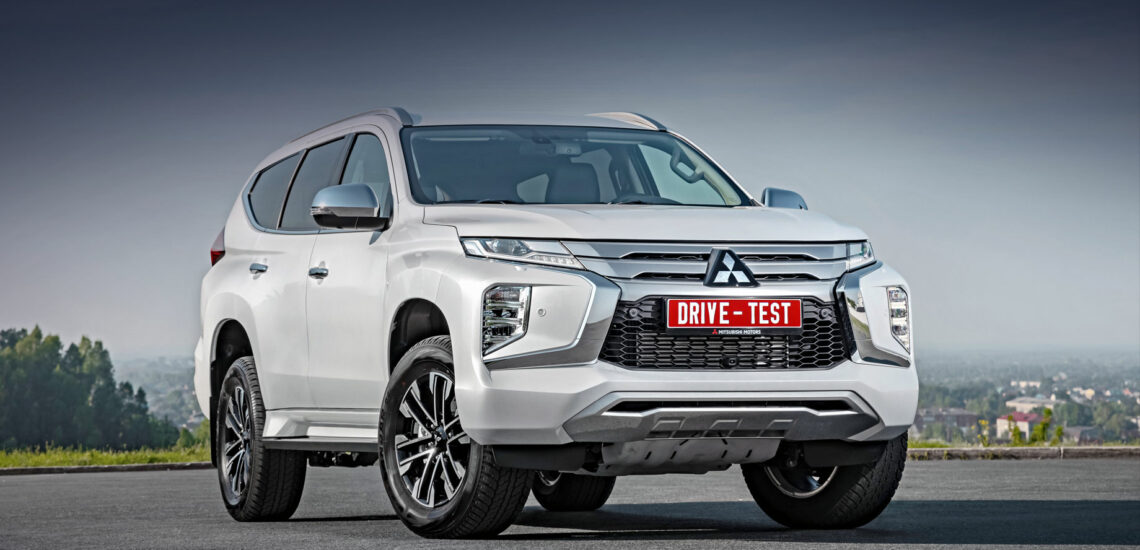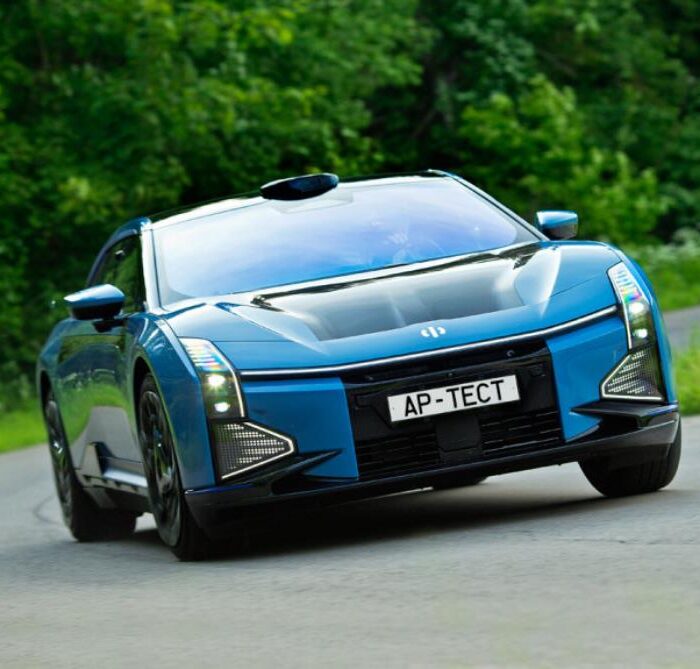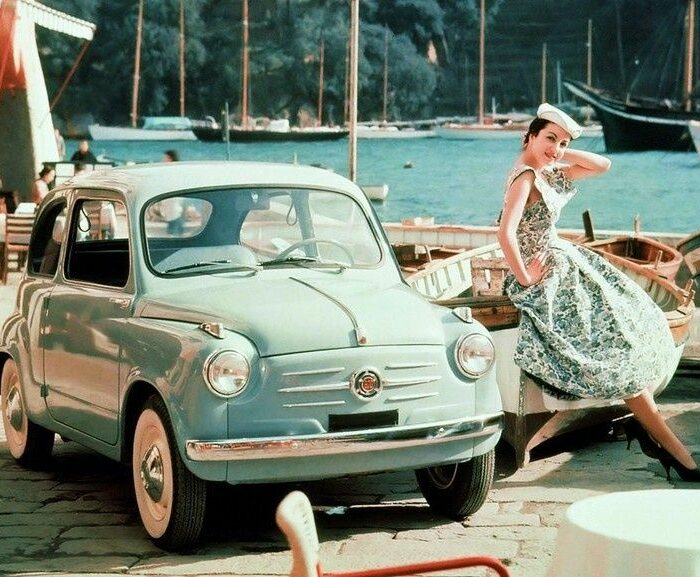The updated Pajero Sport became a flagship of the Mitsubishi model range not for the fun of it: the real Pajero will no longer be produced. Updating the SUV, which has been produced since 2006, would require too much money. Mitsu’s priorities have also changed. As a result, a place on the throne was given to the successor that has a utility pickup truck in its pedigree.
The restyling was introduced the year before last, but due to well-known events, a full-fledged test drive for the press is being conducted only now. It’s known that changes are mainly in the field of ergonomics and everyday use convenience, and almost all the equipment has remained the same. There are several reasons for this: Mitsubishi is not in the best shape, and the conservative audience can’t be called demanding.
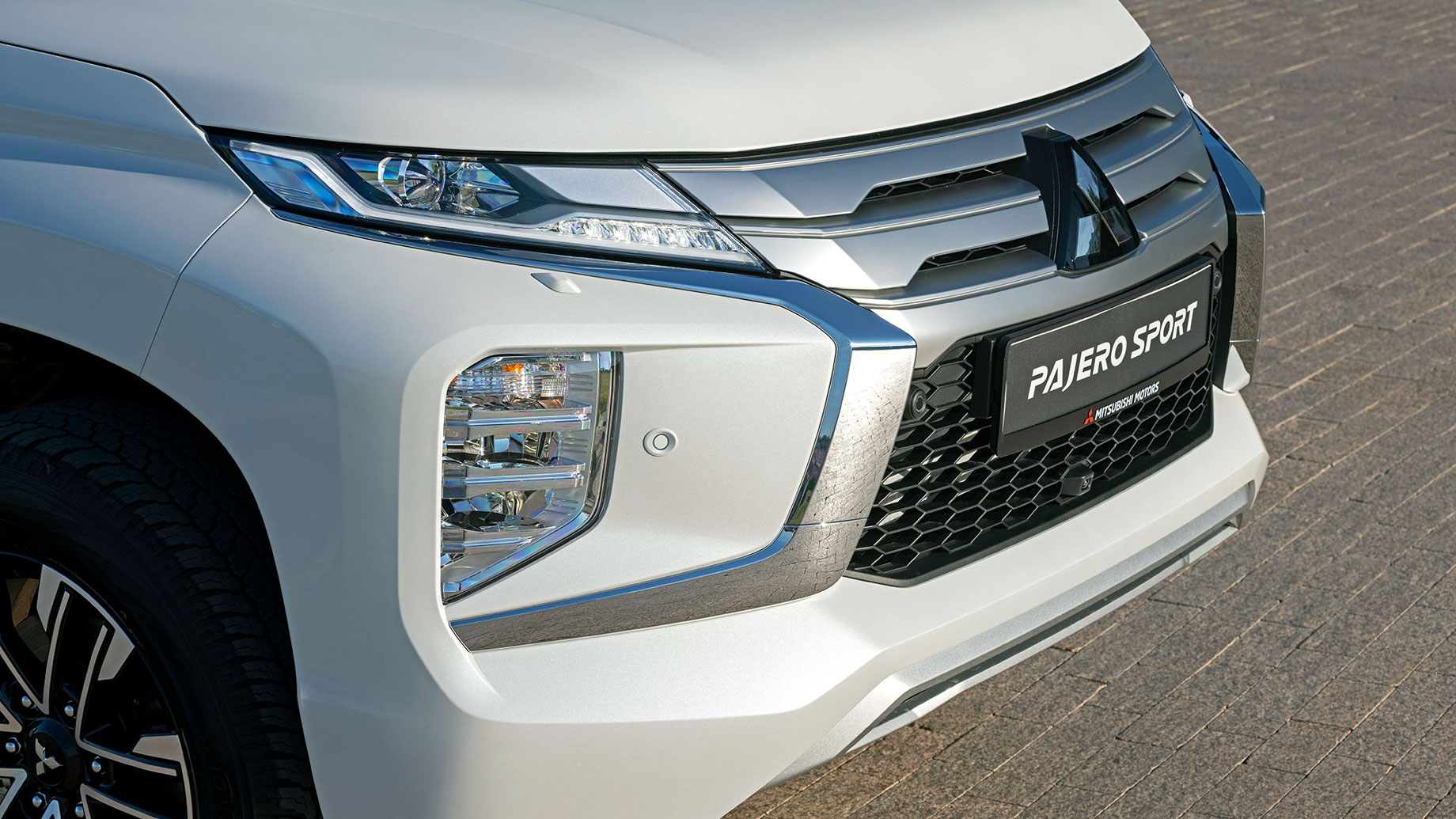
Our cars have the Ultimate maximum configuration with the well-known 2.4-liter 4 N15 turbodiesel engine, developing the same 181 hp and 430 N-m. Gasoline options with a 3-liter V6 engine weren’t brought – there is no need to be distracted by a version with a sales share of less than ten percent. It’s good that there are several owners of the previous Sport in our team: each of us can compare feelings with others’ operating experience.
The “racer” from our crew knows the car so well that he generously offered me the steering wheel for the whole trip. There will be less fuss with adjustments: there is no memory seat adjustment even in the top-end configuration – the height and reach of the steering column are adjusted manually. Even the newfangled Mitsubishi Remote Control application can be linked to only one phone. No “me”, “wife”, and “dog” profiles. If you want to connect a second phone and control the locks, trunk door, headlights, using the app, untie the first one.
We are starting: there is a 500-kilometer (or 310-miles) journey ahead. Dry weather and a ban on entry into the forest limit the off-road part of the route. In addition to asphalt, we can only count on gravel and earth roads. A set of clothes “for dirt” packed by me remains unused. However, the pre-restyling Sport has already proved everything off-road, and the update doesn’t limit the abilities of the SUV in any way.
The traffic jam at the exit allows us to evaluate the new Auto Hold function. But it doesn’t last long enough to find out how the Sport behaves after ten minutes, which is the limit of automatic holding. Ultimate also offers adaptive cruise control, a blind spot monitoring system with an indication in mirrors, an all-round camera, and auto braking to 80 km/h. One of the novelties is an approaching-vehicle signal during parking maneuvers.
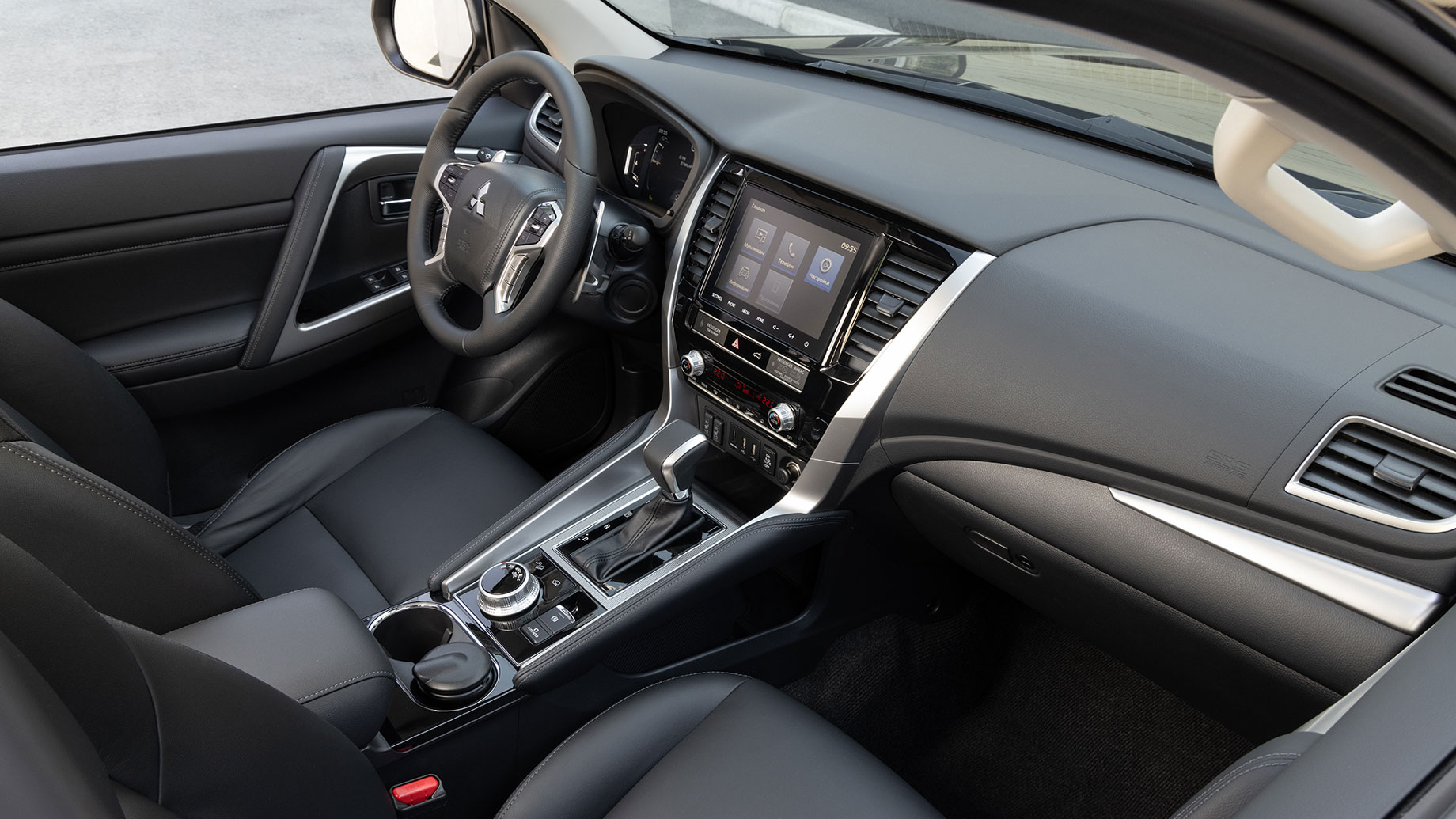
I’m comfortable behind the wheel. But the leather is a bit harsh. The knees don’t touch the center console with swollen sidewalls. They say they added thickness so that a tall driver doesn’t bear against the plastic of the tunnel. But drivers complained more about its overall width, which makes the interior seem cramped. It didn’t get any better.
I don’t understand why colleagues focus on the noise and vibration load of the Mitsubishi diesel engine. In my opinion, everything is within limits. In the city, the motor doesn’t bother me with a growl. The Aisin eight-speed automatic transmission shifts gears quickly. There are enough dynamics in urban traffic — both for starting at traffic lights, and for a lane-change in a stream. The steering wheel turning force is a little weak, the responses are smooth. The steering wheel makes almost four lock-to-lock turns, but the turning radius doesn’t exceed 5.6 m (18 feet) — the Sport nimbly maneuvers in yard areas with dynamic work with hands.
On the highway, the car confidently keeps a straight line without requiring a steering correction, but nosedives slightly in sync with invisible road inequalities, like a boat on the waves. The amplitude of these fluctuations, fortunately, doesn’t grow. We have already noted that the Sport is well handled for a body-on-frame SUV. Only care of passengers and seats without developed lateral support stop you from the swashbuckling passage of winding sections.
You need to prepare for overtaking in advance, because there is barely enough traction when accelerating on the move. Lower the gear with the paddle shifter a second before the lane-change and keep the pedal pressed to the floor until the end of the maneuver. A diesel engine gains momentum slowly. I’m not surprised that the electronic engine control unit’s re-flash is very common among the Sport owners. However, the motor will be enough for fans of a quiet ride: at speeds up to 120 km/h (74.5 miles/h), overtaking doesn’t seem painful. It’s just a little hard for me after the usual five-liter eights. But there is a completely different fuel consumption here!
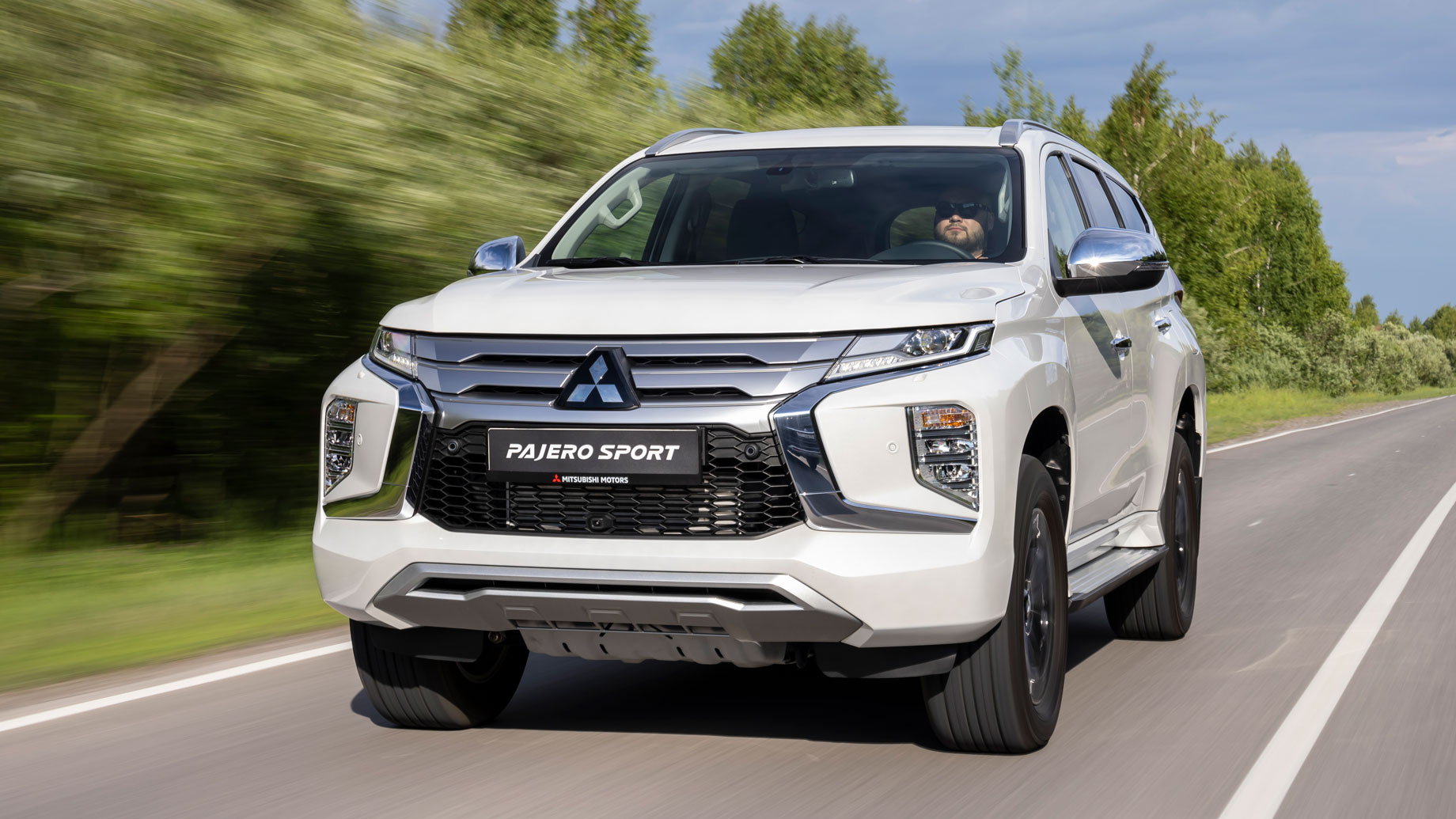
Having driven onto an earth road abundantly covered with coarse gravel, I notice that the tires are overinflated. It is usually recommended to lower the pressure for a comfortable ride on a dirt road, and moreover, our wheels were also heated on the highway. As a result, the tires don’t work, but the powerful suspension compensates for this disadvantage. I have no complaints about it even in this mode, but I still bleed tires a little at stops – I didn’t find how to display the pressure monitoring system readings on the dashboard…
The Super Select 4WD-II transmission allows you to activate all-wheel-drive mode at speeds up to 100 km/h (62 miles/h). It responds to the rotation of the dial-controller in motion in three to four seconds. When the front bodywork engages, each fuel supply is accompanied by a weak poke, as if the front driveshaft has a small backlash. According to the owners, this feature of the transmission is characteristic of the Sport of all generations.
The road becomes concrete. I apologize in advance to my passengers and direct the Mitsubishi at full speed to the rough joint between two pavement types. The suspension gently swallows the sharp change. There is no creak or impact in the cabin. They say that the pre-restyling version indecently bounced on the earth road, but I don’t notice any exceptional jumps. Although only the front shock absorbers have been redesigned. The radiator pack is still not protected by a metal mesh, although a stone caught on the highway is able to puncture the intercooler and immobilize the car.
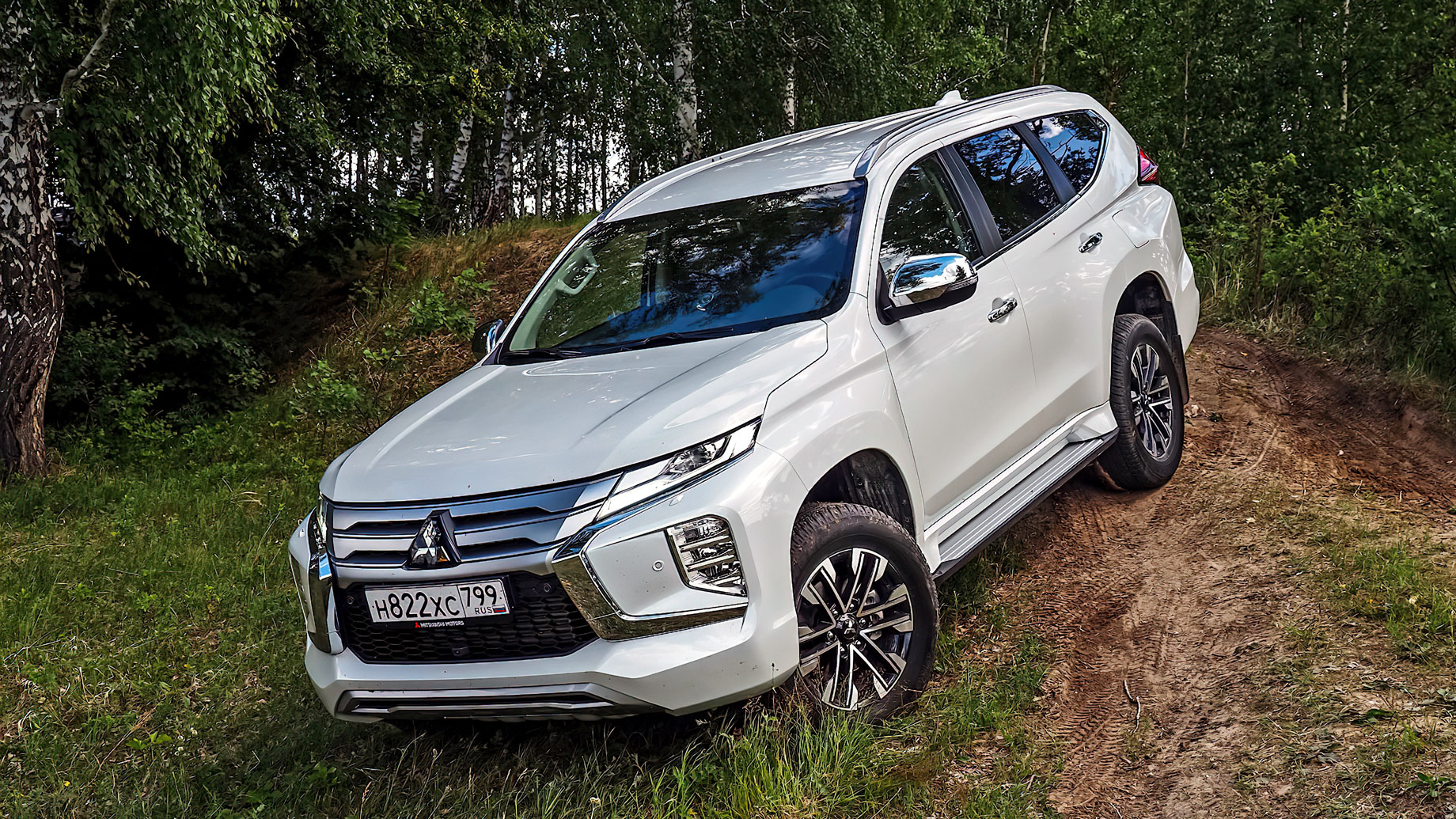
I’ve noticed a nice clearing with a slope of 30 degrees leading to the river. Here you can use a descent control system, but it is more interesting to use engine braking. It is ineffective on a high gear range: the Sport runs too fast even in first gear. A granny gear allows you to move academically without touching the brakes. I climb back sideways, trying to catch the cross-axling. I activate the rear lock and the car climbs the hill without any problems. The five-minute off-road ride is over.
When we got to the transfer point, we took a bus for a sightseeing tour. So, we need to get things out of the trunk. The weather is sunny and dry. But even if it was raining, we wouldn’t have to endure a dirty shower: the new shape of the lining should now effectively drain water, and the door itself received an electric drive and a kick sensor – for the first time on the Pajero. It didn’t work out for me to open the door with my foot…
24 hours at the wheel left no trace of fatigue. I think you can easily drive a thousand kilometers (621 miles) at one go on the Sport. The only thing missing in the heat was the seat ventilation. According to the trip computer, the consumption of diesel fuel for 500 km (310 miles) of a very vigorous run didn’t exceed 11 liters per hundred km. Therefore, the 68-liter tank will allow you to drive 700 (435 miles) kilometers on one filling. Yes, it’s not very fast, so as not to be deafened by the wind, but with bypassing queues at gas stations during the peak season.
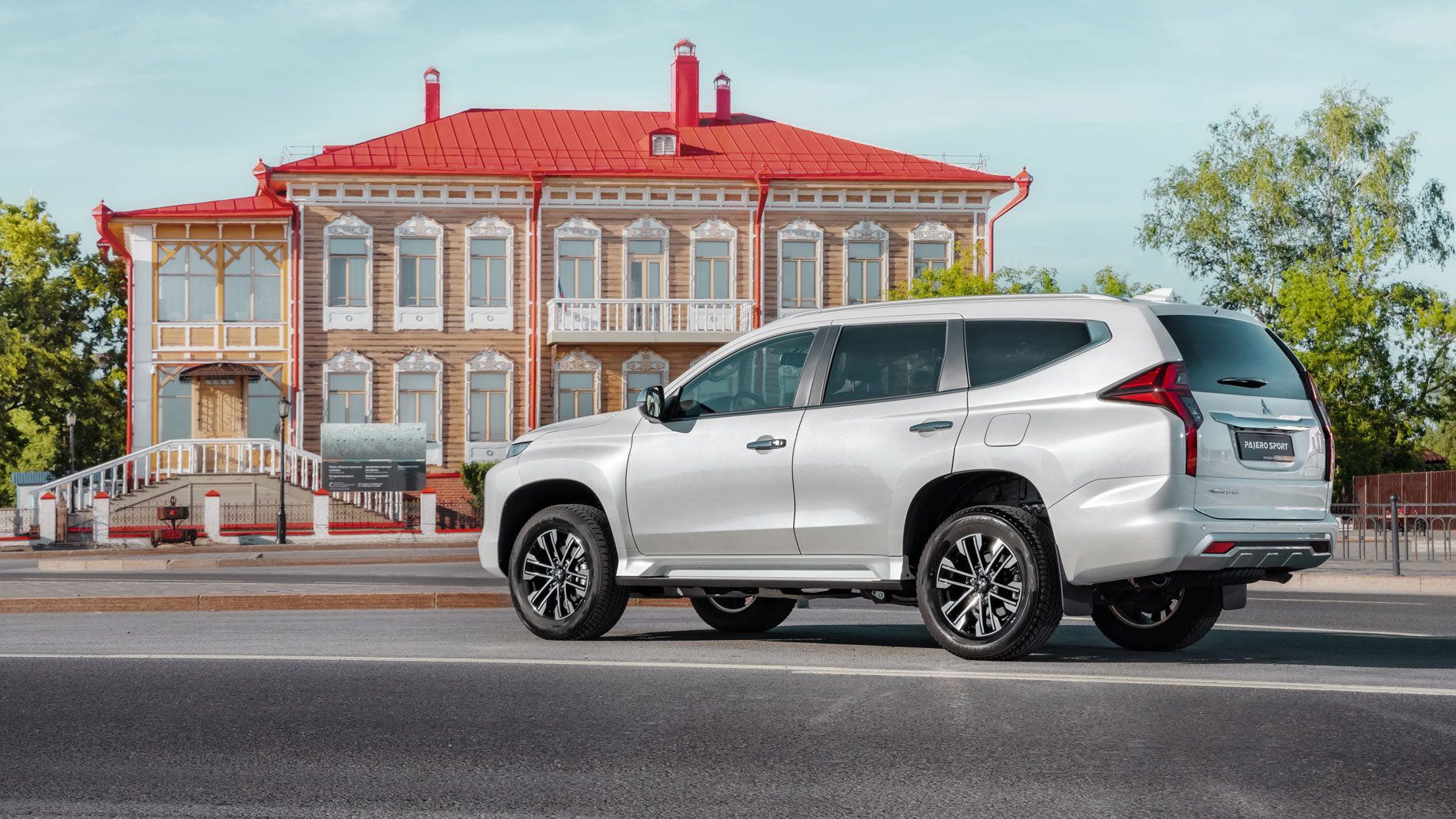
The main difficulty with the updated Sport is that we have to get used to the fact that it is now the flagship of the Mitsubishi model line. The car, which has always been perceived as a “junior Pajero for those who aren’t old enough”, has become the main one and is responsible for all. The situation is more complicated by the fact that the Sport was the result of a low-cost adaptation of a rustic pickup truck, and remained. Even in the top-end Ultimate configuration, the interior is rough. Let’s say I don’t care — the main thing is to wash easily. But the brand probably has demanding loyal customers.
All two days behind the wheel of the updated Sport, I was trying to figure out if I would miss the full-size Pajero. I won’t. The size of the Sport and its direct competitor Fortune is better suited to my needs in the non-premium segment. Moreover, Mitsubishi hasn’t managed to instill in the old-timer the noble asphalt manners that you expect from a car with an integral body and independent suspensions. And off-road, of course, I prefer a frame and a rigid axle.
This is a translation. You can read the original here: https://www.drive.ru/test-drive/mitsubishi/60d99c526c487c28d2a905a2.html

Published May 26, 2022 • 7m to read

